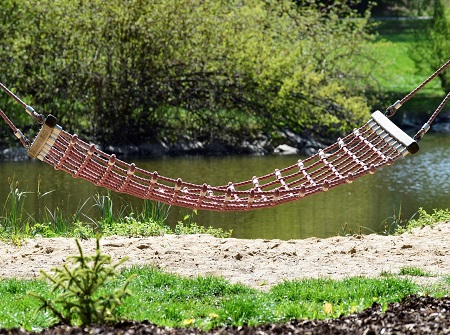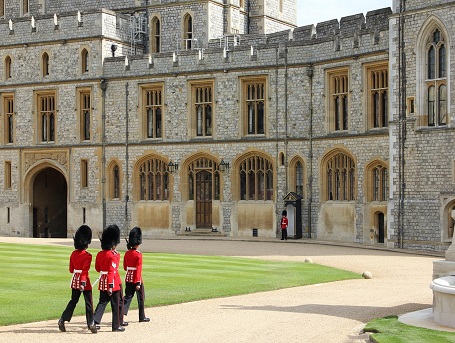 Team building doesn’t have to be synonymous with trust falls and cringe-worthy icebreakers. Although the goal of these traditional activities is noble—revitalizing morale, nurturing communication, and enhancing collaboration—the reality often falls flat, leaving employees feeling uninspired or, even worse, uneasy. This is where unconventional team-building ideas come into play. They disrupt monotonous routines, ignite creativity, and cultivate authentic connections in ways that conventional activities typically fail to achieve. By embracing fresh approaches, teams can engage in dynamic experiences that truly resonate and inspire.
Team building doesn’t have to be synonymous with trust falls and cringe-worthy icebreakers. Although the goal of these traditional activities is noble—revitalizing morale, nurturing communication, and enhancing collaboration—the reality often falls flat, leaving employees feeling uninspired or, even worse, uneasy. This is where unconventional team-building ideas come into play. They disrupt monotonous routines, ignite creativity, and cultivate authentic connections in ways that conventional activities typically fail to achieve. By embracing fresh approaches, teams can engage in dynamic experiences that truly resonate and inspire.
Let’s explore a few unconventional yet effective team building experiences that actually deliver results.
1. Escape Room Adventures
Escape rooms are more than just trendy weekend fun. These experiences require team members to work together under pressure, think critically, and solve problems with limited information. They reveal natural leaders, creative thinkers, and how individuals respond to challenges, all in a low-stakes, entertaining environment.
What makes escape rooms particularly useful for team building is the post-game discussion. Teams often gather to analyze what went right, what went wrong, and how they could have improved their communication. It’s team bonding disguised as fun with real workplace applications.
2. Volunteer Days with a Twist
Volunteering is a well-known way to bond teams while giving back to the community. But take it a step further by integrating a challenge or friendly competition into the day. For example, teams could compete to build the most efficient food drive assembly line or create the most impactful social media campaign for a local nonprofit.
Adding a game element keeps energy high and reinforces collaboration. Plus, working for a cause helps teams connect over shared values and feel part of something bigger than their roles.
3. Culinary Collaboration Challenges
Think of this as the “Chopped” version of a team-building event. Give your teams a basket of surprise ingredients and a limited time to prepare a meal or dessert. This type of challenge fosters creativity, improvisation, and communication.
It’s also a chance for people to lead in ways they might not usually get to. The quiet analyst may turn into a fearless team chef, while the usual team lead might become the group’s enthusiastic dishwasher. The shared experience of cooking—and laughing at culinary mishaps—naturally builds camaraderie.
4. Urban Scavenger Hunts
Scavenger hunts are an exciting way to engage teams, but imagine taking that thrill out of the office and transforming your entire city into a vibrant playground. An urban scavenger hunt invigorates the spirit of exploration, encouraging employees to step outside and embark on an adventure filled with discovery and teamwork.
As participants navigate through bustling streets and hidden corners, they invigorate their minds and bodies, collaborating to decode clues and tackle creative challenges that test their wit and resourcefulness. This immersive experience fosters a sense of camaraderie in a relaxed environment, prompting teams to think creatively and adapt quickly to their surroundings.
Enhance the excitement by utilizing interactive apps or platforms that introduce stimulating challenges, allow for captivating photo opportunities, and feature real-time scoring—keeping engagement levels soaring and the competitive spirit alive. Embrace the thrill of the hunt and watch as teamwork flourishes in the heart of the city!
5. Improv Comedy Workshops
The idea of participating in improv might make some employees cringe at first, but this activity has surprising benefits. Improv teaches active listening, adaptability, and thinking on your feet—all vital workplace skills.
Unlike a rehearsed presentation, improv demands presence and participation. It creates a safe space to try, fail, and laugh together. And when facilitated by a seasoned coach, it’s surprisingly effective at breaking down barriers and nurturing trust among team members.
6. Storytelling Circles
Gather your team for a storytelling session with a twist. Everyone gets a prompt, like “a time I failed and what I learned” or “a moment I was most proud of”, and a few minutes to share their experience. This activity promotes vulnerability, deepens empathy, and helps team members see each other as whole people rather than just coworkers.
It works best in small to mid-size teams and can be led by a manager, HR professional, or a hired facilitator. These sessions tend to stick with people long after they’re over, and they often lead to more open communication across the board.
7. Team Building Through the Arts
Art-based activities tap into creativity in a way that PowerPoint presentations never will. This could be a collaborative mural project, a pottery class, or even songwriting. When employees are invited to create something together, they learn how to negotiate roles, support each other, and navigate differing ideas without hierarchy.
It’s especially useful for cross-departmental teams who don’t typically interact. Working on a shared art project flattens the structure and fosters equal participation, helping team members form new connections.

8. Outdoor Wilderness Retreats
Think beyond the typical ropes course. Outdoor wilderness retreats immerse employees in nature, far away from screens, emails, and meetings. Activities like hiking, canoeing, or building a shelter force team members to rely on each other in unique and meaningful ways.
These retreats are ideal for teams needing a reset or navigating change. The shared challenge of adapting to a natural environment encourages communication, reflection, and renewed trust—elements that often fade in fast-paced office settings.
9. Cross-Departmental “Job Swap” Day
One of the biggest barriers to collaboration is a lack of understanding about what others actually do. Enter: job swapping. Let team members from different departments shadow each other for a day. Not only does this foster empathy, but it also encourages cross-functional communication and sparks ideas for process improvements.
Make it fun by creating “passport” cards for each team member to document their experience and share takeaways in a group debrief session. You might be surprised by the insights that surface.
10. The Ultimate Offbeat Option: A Yacht Party
Sometimes, the best way to bond is to leave the office entirely—and what better place than out on the water? A team building corporate yacht party is one of the more luxurious yet effective ways to encourage relaxation, connection, and informal interaction.
On a yacht, titles and job descriptions fade into the background. People are more inclined to mingle, have honest conversations, and enjoy each other’s company without the pressures of the office. The change of setting alone can ignite new energy and perspective, while optional onboard activities can be tailored to fit your team’s dynamic.
Why Unconventional Works
Traditional team building often falls flat because it doesn’t reflect the complexity or creativity of the modern workplace. When people are forced into contrived situations, the outcomes are rarely authentic or lasting.
Unconventional team building ideas, on the other hand, encourage genuine connection. They engage people in ways that matter through emotion, shared challenge, and novelty. Whether it’s laughter in an improv class, collaboration over a pot of stew, or reflection in a storytelling circle, these experiences stay with your team far longer than a group photo at the end of a workshop.
Making It Stick
Of course, even the best team building idea won’t work if it’s treated as a one-off event. The key is follow-up. Encourage your team to reflect on their experience, talk about what they learned, and suggest ways to carry those lessons into daily work. Leaders should model vulnerability and openness by participating fully and sharing their own reflections.
Team building shouldn’t be seen as a checkbox on a culture calendar—it should be an evolving part of your company’s ethos. And that means taking chances, experimenting, and trusting that sometimes, the most unexpected experiences yield the most meaningful results.








